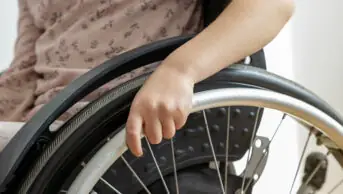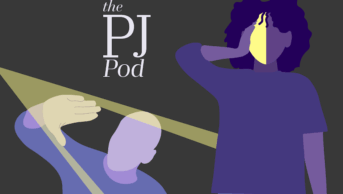
Shutterstock.com/The Pharmaceutical Journal
Increasing numbers of celebrities, including comedians Sue Perkins and Jonny Vegas and presenter Ant McPartlin, have shared their attention deficit hyperactivity disorder (ADHD) diagnoses publicly over the past few years. In doing so, they have raised awareness of this common neurodevelopmental disorder that is characterised by age-inappropriate levels of inattention, hyperactivity and impulsivity.
This increased awareness, coupled with lockdowns during the COVID-19 pandemic, has enabled more people to recognise symptoms of ADHD in themselves, raising demand for mental health services and, subsequently, increasing diagnoses of and prescribing for ADHD, particularly in adults.
Numbers treated are rising…
The number of people in England obtaining central nervous system (CNS) stimulants and medicines for ADHD on the NHS has more than doubled to 233,000 over the past eight years, particularly accelerating over the past two years (see Figure 1). The number of prescription items dispensed has increased in line with the number of patients.
…but ADHD is still underdiagnosed and undertreated
Using prevalence data, ADHD UK has estimated that around 2.2 million people have ADHD in England[1]. Not all people diagnosed with ADHD choose to receive medicines since many can function without them. However, researchers estimate that around 58% of people with ADHD are treated with medicines[2,3]. If this is applied to the England prevalence figure, we would expect to see 1.3 million people receiving ADHD medicines, as opposed to the 233,000 who did so in 2022/2023, suggesting that more than 80% of people, who might consider taking ADHD medicines, remain undiagnosed.
According to analysis by The Pharmaceutical Journal, the proportion of the estimated ADHD population receiving medicines in 2022/2023 has doubled since 2015/2016 but remains low at around 11% (see Figure 2).
ADHD drug costs to the NHS top £100m…
The cost to the NHS of CNS stimulants and ADHD medicines was £104m in 2022/2023, with half of this money spent on methylphenidate (£52m) and £33m spent on lisdexamfetamine (see Figure 3). However, the cost of treating ADHD should be considered in the context of the avoidable mental and physical health conditions that people with ADHD are vulnerable to, and the cost of these to health services, education, social care and the justice system.
Note: Caffeine, caffeine citrate and pitolisant hydrochloride not shown due to being too small to fit on the scale.
…with methylphenidate the most prescribed drug
Methylphenidate is the mainstay of treatment for both adults and children, reflecting National Institute for Health and Care Excellence guidelines, which state that methylphenidate is the first-line option in drug treatment for children, and the joint first-line option with lisdexamfetamine for adults[4]. However, prescriptions for lisdexamfetamine are rising among adults, particularly over the past two years (see Figure 4). This may be because increasing numbers of people are being diagnosed as adults and several methylphenidate brands are not licensed for treatment initiation in this cohort, whereas an adult preparation of lisdexamfetamine (Elvanse; Takeda) has been available since 2015. Shortages of certain methylphenidate preparations over the past couple of years may also be playing a part.
Note: Caffeine, caffeine citrate and pitolisant hydrochloride not shown due to being too small to fit on the scale.
More adults than children now receive ADHD medicines…
The number of adults in England prescribed at least one medicine for ADHD has almost doubled since the beginning of the COVID-19 pandemic, overtaking the number of children prescribed these drugs (see Figure 5).
…with more women finally being recognised
Boys have historically been more likely to be referred by schoolteachers for assessment and diagnosis of ADHD, owing to their tendency to be more disruptive than their female counterparts[4]. This has led to a huge overhang of women who were not diagnosed as children and are now coming forward for assessment. The number of women being diagnosed and receiving treatment is increasing more steeply than the number of men (see Figure 6).
The most common group to receive ADHD medicines in 2022/2023 was boys aged 10–14 years, with 47,300 identified patients (20% of all patients). The next most common groups were boys aged 15–19 years, with 31,900 identified (14% of all patients), and boys aged 5–9 years, with 16,100 identified (7% of patients) (see Figure 7).
Prescribing is higher in deprived areas… but will that change?
More people living in the most deprived parts of England were prescribed medicines for ADHD in 2022/2023 than in the least deprived parts (56,000 vs 44,500 ) (see Figure 8).
Studies have shown that there is a social gradient evident for prevalence of ADHD and receipt of medicines for ADHD[5,6]. The reasons for this have not been fully elucidated, but potential explanations include differential exposures to psychosocial and environmental risk factors, as well as genetic or developmental contributions[7].
The gap in NHS prescribing of ADHD medicines between high and low areas of deprivation appears to have narrowed in the past year, possibly reflecting the impact of the cost-of-living crisis on people’s ability to pay for private care.
- 1ADHD incidence. ADHD UK. https://adhduk.co.uk/adhd-incidence/ (accessed 13 Jul 2023).
- 2Price A, Ford T, Janssens A, et al. Regional analysis of UK primary care prescribing and adult service referrals for young people with attention-deficit hyperactivity disorder. BJPsych open. 2020;6. doi:10.1192/bjo.2019.94
- 3Bushe C, Wilson B, Televantou F, et al. Understanding the treatment of attention deficit hyperactivity disorder in newly diagnosed adult patients in general practice: a UK database study. POR. 2015;:1. doi:10.2147/por.s74161
- 4Attention deficit hyperactivity disorder: diagnosis and management. National Institute for Health and Care Excellence. 2018.https://www.nice.org.uk/guidance/ng87 (accessed 13 Jul 2023).
- 5Nunn SPT, Kritsotakis EI, Harpin V, et al. Social gradients in the receipt of medication for attention-deficit hyperactivity disorder in children and young people in Sheffield. BJPsych open. 2020;6. doi:10.1192/bjo.2019.87
- 6Prasad V, West J, Kendrick D, et al. Attention-deficit/hyperactivity disorder: variation by socioeconomic deprivation. Arch Dis Child. 2018;104:802–5. doi:10.1136/archdischild-2017-314470
- 7Russell G, Ford T, Rosenberg R, et al. The association of attention deficit hyperactivity disorder with socioeconomic disadvantage: alternative explanations and evidence. J Child Psychol Psychiatr. 2013;55:436–45. doi:10.1111/jcpp.12170
3 comments
You must be logged in to post a comment.



Excellent article. The growth in private ADHD clinics is also driving this, but these can only thrive if the NHS isn’t willing or able to provide diagnosis and treatment.
It IS a good article but there's no consideration given to root cause analysis. WHY are we witnessing this massive growth not just in ADHD but in all forms of mental health problems. I've become fascinated by the link between diet and cardio metabolic health and the link between what we eat and brain function. Could it all be down to the role of the mitochondria? Prof Chris Palmer certainly thinks so and I can't recommend his book Brain Energy too highly
The increase is not only happening in the UK but also most part of the world. see: https://www.thelancet.com/journals/eclinm/article/PIIS2589-5370(22)00509-0/fulltext
Indeed not only ADHD treatment increase but also almost all psychotropic drugs in different part of the world. See: https://www.thelancet.com/journals/lanpsy/article/PIIS2215-0366(21)00292-3/fulltext
It is probably a combination of better recognition, diagnosis and willingness to prescribe and take.